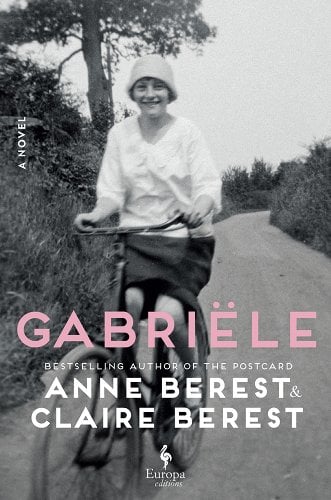Gabriële by Anne Berest & Claire Berest
Muse to the makers of the modern art movement, brilliant musician in her own right, epic mother figure to a manic menagerie of creative intellects, Gabriele Buffet was one of a kind. This loving portrait of a wild time in the art world reveals a fascinating family history by two sisters delving deep into their familial past.
If you loved Anne Berest’s “The Postcard” you absolutely must read this furtherance of her most remarkable family’s story. As amazing as the revelations about her ancestors’ exploits were in the previous book, this is an even more astounding, fascinating and enlightening account of a clan like no other. Reading like a real-life Forrest Gump or Zelig, her predecessors befriended the founding members of the modern art movement. Picasso, Duchamp, Braque, Guillame Apollinaire, Man Ray and others as well as icons of culture such as Elsa Schiaparelli. The pantheon of artists, writers and theatre folk is nearly unbelievable but true.
Francis Picabia, one of the creators of the cubist movement married Gabriele Buffet, a woman who was to become the muse of an entire generation of creators. Her intellect and unfailing instincts would inspire and guide some of the most recognizable of the 20th century’s notables while downplaying her own estimable talents as a musician. Her sacrifice and tolerance of bad behavior in her husband and his friends made possible some of the most important movements and features of the modern art world.
The discovery of such a rich family heritage is revealed in lavish detail culled from multiple sources, adding to the verisimilitude of the fictional aspects of the book. An extensive bibliography supports the narrative. These people were real and the things they said and did are reported with accuracy. Such a remarkably extensive panoply of art, literature, dance, music and politics could hardly be found anywhere. Just reading about the Berest family is enriching in itself, although the story is fascinating for the nearly incredible patience and forbearance exhibited by Gabriele Buffet for a husband who was mercurial, serially unfaithful, moody and alternately reclusive and manically social. Picabia was epically unpredictable and the wild unfettered exploits of these makers of the modern art movement and the woman who nursed them intellectually are all evidence of a unique personality and one who has been given little credit although much is owed. Gabriele would have been a wonderful person to know. Reading this book is the next best thing.



